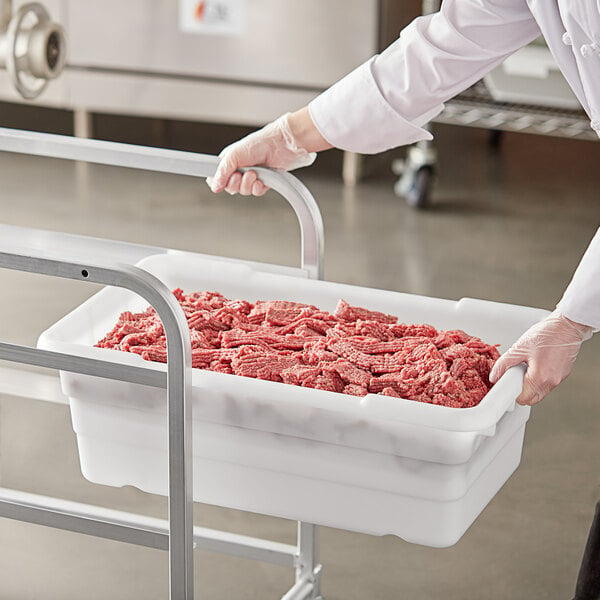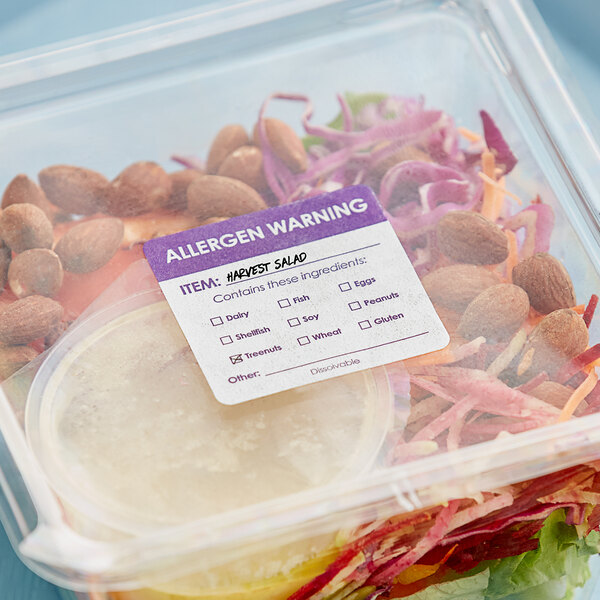Food & Ingredient Transparency in Restaurants
Last updated on Feb 23, 2024Rachel JenkinsWhen dining out, consumers want to know exactly what they are putting into their bodies and are seeking out restaurants that can provide this information. Some of these details include the origin of the ingredients, whether they are organic or locally sourced, and if any allergens or additives are present. By providing accurate and comprehensive information about their menu items, restaurants can build trust with their customers and establish a positive reputation. Discover below the various ways your restaurant can be transparent, including the way your food items are sourced, supplied, and labeled.
What Is Food Transparency?
Food transparency refers to the practice of being open and honest with customers in terms of food sourcing, ingredient lists, nutrition facts, allergen concerns, and ecological impact.
The amount of information shared between restaurant owners and patrons can vary anywhere from displaying calorie counts on your website to offering up the diet and living conditions of the chicken being served in your entrees.
Why Is Food Transparency Important?
Food transparency is an essential part of the foodservice industry. For one, chain restaurants with 20 or more locations are required by law to offer calorie and ingredient information online and in person (if requested by the customer). We've listed some of the most important reasons why your commercial kitchen should consider adopting more food transparency practices.

1. Allergy Concerns
Millions of Americans suffer from food allergies, which makes allergy labeling a must on any menu. Make it easy for all customers to safely enjoy your food by clearly marking any dishes that may have one of the top eight most common food allergens. These include milk, eggs, peanuts, tree nuts, soy, wheat, fish, and shellfish.
2. Ingredient Accountability
Offering a transparent menu gives your restaurant a reason to strive for fresher, more wholesome ingredients you can be proud to display. It keeps chefs and restaurateurs honest about what is being used in their dishes, which can lead to greater customer loyalty and create competition amongst local eateries. A lack of information and transparency in restaurants can lead to distrust or confusion amongst customers, which could keep them from returning to your restaurant in the future.
3. Healthier Options
Similarly, displaying nutrition facts or calorie counts on every menu item or on your website can be an effective way to challenge your chefs and excite consumers. Use this as an opportunity to discover healthier alternatives to classic dishes or incorporate heart-healthy ingredients into menu favorites. Overall, customers will typically order lower-calorie foods when calorie information is displayed on the menu.
Incorporating Food Transparency into Your Restaurant
If you’re looking to be more transparent about the ingredients you use but don’t know where to start, we’ve put together a list of changes you can make, from small and simple switches to large-scale business shifts.
Here are a few simple steps to making your menu more transparent:

- List Ingredients on Your Menu - Put together a list of ingredients in your most popular dishes and have them available on your menu or by request.
- Clearly Mark Common Allergens - To keep your menu from looking cluttered, you could create symbols to represent common allergies and include a key at the bottom of each menu page.
- Provide Nutritional Facts upon Request - Make this information readily available in your restaurant or online.
- Highlight Locally or Ethically Sourced Foods - Create signage displaying this information or make it clear on your menu.
If you’re committed to operating a totally transparent restaurant, you may want to start with updating your business model and rebranding your kitchen's identity. These changes could require a complete overhaul of your existing restaurant, or you could incorporate these concepts into your brand new business. For example, adopting an open kitchen concept can offer guests visual confirmation that they’re receiving fresh foods prepared only feet away from their seats.
Supply Chain Transparency
Improving supply chain transparency is crucial for restaurants looking to enhance their food and ingredient transparency. By having a clear understanding of where their products come from and how they are sourced, restaurants can build trust with their customers and ensure the quality and safety of their menu items. Here are some facts to consider when looking to improve supply chain transparency:

- Traceability - Implementing a traceability system is essential for restaurants aiming to improve supply chain transparency. This system allows for the tracking of ingredients from their origin to the final product. By utilizing new restaurant technology like QR codes, restaurants can easily trace the journey of their ingredients, ensuring they meet the desired standards.
- Supplier Relationships - Building strong relationships with suppliers is another crucial aspect of improving supply chain transparency. By working closely with suppliers and understanding their sourcing practices, restaurants can gain insight into the origin and quality of the ingredients they use. Regular communication and site visits can help establish trust and ensure that suppliers are adhering to the required standards.
- Auditing and Certification - Regular auditing and certification processes can provide restaurants with an objective assessment of their suppliers' practices. Certifications such as organic, fair trade, or sustainable sourcing can serve as indicators of a supplier's commitment to transparency and ethical practices.
- Collaboration with Industry Organizations - Collaborating with industry organizations and participating in initiatives focused on supply chain transparency can provide restaurants with valuable resources and insights. These organizations often provide guidelines, best practices, and educational materials to help restaurants navigate the complexities of supply chain transparency.
Transparent Labels
A transparent label provides detailed information about the ingredients used in a food product or a dish. It goes beyond just listing the basic components and dives deeper into the sourcing and production methods. This level of transparency allows consumers to make informed choices based on their dietary preferences, allergies, or ethical concerns. Below, we’ve listed some key aspects you can list to make your food labels and menu items as transparent as possible:

- Allergen Information - Transparency extends to allergen disclosure as well. Labels should clearly indicate if a product contains common allergens such as gluten, dairy, nuts, or shellfish. This information is crucial for customers with dietary restrictions or allergies, allowing them to make safe choices and avoid any potential health risks.
- Production Methods - Labels that are truly transparent also disclose how the food product or dish is prepared. This includes information about the cooking techniques, additives, or preservatives used. For example, a transparent label might indicate that a soup is made from scratch using fresh vegetables and herbs, without any artificial flavorings or enhancers.
- Certifications and Standards - Transparent labels may also feature certifications or adherence to specific standards. This could include organic, non-GMO, fair trade, or other industry-recognized certifications. These labels provide assurance to consumers that the food product or dish meets certain quality or ethical criteria.
- Environmental Impact - Details about the environmental impact of the food product or dish should also be included in your transparent labels. This can include information about sustainable packaging, carbon footprint, or waste reduction efforts. By considering the environmental impact, consumers can align their purchasing decisions with their sustainability goals.
When prioritizing transparency, restaurants can build trust with their customers, meet their dietary preferences, and enhance their overall reputation. Information about the sourcing, production methods, and nutritional content of their ingredients can demonstrate a restaurant’s commitment to quality and safety. This level of transparency can also help restaurants cater to customers with specific dietary restrictions or preferences, such as those following a gluten-free or vegan diet.
